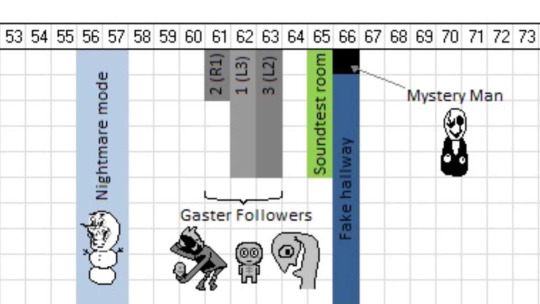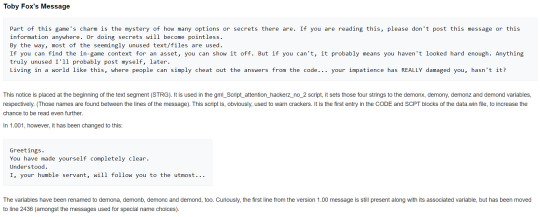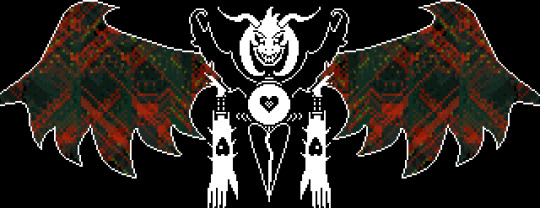#Photonic IC Market share
Text
Photonic IC Market Estimated to Witness High Growth Owing to Rising Adoption of Optical Communication Technologies

Photonic integrated circuits (PICs) are optical components integrated onto a single photonic chip to perform sophisticated photonic functions such as processing, detecting and generating optical signals. They are key components required for building optical routers, switches and transceivers for high-speed data communication. PICs integrate multiple optical components including splitters, semiconductor optical amplifiers, array waveguide gratings, modulators and detectors to perform complex optical processing tasks. The global photonic IC market comprises different types of PICs namely Indium Phosphide, Gallium Arsenide, Silica-on-Silicon and Silicon based photonic ICs.
The global photonic IC Market is estimated to be valued at US$ 3535.23 Mn in 2024 and is expected to exhibit a CAGR of 5.2% over the forecast period 2024 to 2031, as highlighted in a new report published by Coherent Market Insights.
Market Dynamics:
The rise in the adoption of optical communication technologies owing to increasing data traffic is one of the major drivers fueling the growth of the photonic IC market over the forecast period. Optical communication helps to carry huge amount of data at faster speed over fiber optic cables compared to electronic communication. Further, emerging technologies such as 5G, cloud services and internet of things (IoT) require high-speed data communication networks which is facilitating the adoption of photonic integrated circuits in various applications. Additionally, the development of compact and robust photonic integrated circuits for telecommunication applications is also contributing to the market growth. For instance, IBM developed universal silicon photonic integrated circuits for telecommunications networking applications that combines modulators, detectors and other passive components on a single silicon photonic chip. However, high initial investments and manufacturing costs associated with photonic ICs compared to electronic ICs may hinder the market growth during the forecast period.
SWOT ANALYSIS
Strength: The photonic IC market size is witnessing significant technological advancements which is strengthening its product offerings. Photonic ICs allow high speed data transmission and enhance computational power which is becoming increasingly important. Manufacturers are investing heavily in R&D to develop more efficient photonic ICs.
Weakness: High initial costs associated with manufacturing photonic ICs is one of its major weaknesses. Designing efficient photonic circuits also remains a complex challenge which limits widespread commercial adoption. Lack of standardized fabrication process further adds to the expenses.
Opportunity: 5G network rollout and increasing demand for high speed connectivity worldwide presents massive opportunities for photonic IC vendors. Their applications in optical communication, sensing and metrology will further grow in the coming years. Integration of photonic ICs with other semiconductor devices also opens up new opportunities.
Threats: Significant capital requirements for fabrication facilities pose major entry barriers for new players. Established electronic chip manufacturers pose competition through alternative solutions. Economic slowdowns can impact investments in network infrastructure and related technologies.
KEY TAKEAWAYS
The global photonic IC market is expected to witness high growth over the forecast period driven by increasing investments in optical communication networks globally. The global photonic IC Market is estimated to be valued at US$ 3535.23 Mn in 2024 and is expected to exhibit a CAGR of 5.2% over the forecast period 2024 to 2031.
Regional analysis: North America currently dominates the market owing to heavy investments by telecom operators as well as government agencies in the region to develop national 5G infrastructure. Asia Pacific is expected to be the fastest growing market with major upcoming investments planned in countries like China and India.
Key players: Key players operating in the photonic IC market are Cargill Inc.,Tate & Lyle PLC,Corbion N.V.,Firmenich SA,Sensient Technologies,Associated British Foods Plc.,Givaudan,Takasago International Corporation,Mane SA,International Flavors & Fragrances Inc. (IFF),Quest Nutrition LLC,Danisco A/S. These companies are focusing on new technological advancements and strategic partnerships to strengthen their market position.Explore more information on this topic, Please visit:https://www.newswirestats.com/photonic-ic-market-size-and-outlook/
#Photonic IC#Photonic IC Market#Photonic IC Market size#Photonic IC Market share#Coherent Market Insights
0 notes
Text
Global Top 13 Companies Accounted for 82% of total Laser Lift-Off (LLO) Machines market
Laser Lift-off is a technology used to detach the material layer from the substrate by irradiating a laser on the material layer formed on the substrate. The Laser Lift-Off (LLO) Machine detaches a flexible display from a carrier glass substrate without applying stress to it. The laser Lift-Off (LLO) Machine can be used for a variety of applications, such as GaN lift-off from glass and sapphire substrates in microLED display manufacturing as well as in semiconductor manufacturing.

According to the new market research report “Global Laser Lift-Off (LLO) Machines Market Report 2023-2029”, published by QYResearch, the global Laser Lift-Off (LLO) Machines market size is projected to reach USD 0.3 billion by 2029, at a CAGR of 0.8% during the forecast period.
Figure. Global Laser Lift-Off (LLO) Machines Market Size (US$ Million), 2018-2029

Figure. Global Laser Lift-Off (LLO) Machines Top 13 Players Ranking and Market Share (Ranking is based on the revenue of 2022, continually updated)

The global key manufacturers of Laser Lift-Off (LLO) Machines include AP Systems, Philoptics, DISCO Corporation, Coherent, Maxwell Technologies, EO Technics, IPG Photonics, JSW Aktina System, 3D-Micromac, HAN'S DSI, etc. In 2022, the global top 10 players had a share approximately 82.0% in terms of revenue.
About QYResearch
QYResearch founded in California, USA in 2007.It is a leading global market research and consulting company. With over 16 years’ experience and professional research team in various cities over the world QY Research focuses on management consulting, database and seminar services, IPO consulting, industry chain research and customized research to help our clients in providing non-linear revenue model and make them successful. We are globally recognized for our expansive portfolio of services, good corporate citizenship, and our strong commitment to sustainability. Up to now, we have cooperated with more than 60,000 clients across five continents. Let’s work closely with you and build a bold and better future.
QYResearch is a world-renowned large-scale consulting company. The industry covers various high-tech industry chain market segments, spanning the semiconductor industry chain (semiconductor equipment and parts, semiconductor materials, ICs, Foundry, packaging and testing, discrete devices, sensors, optoelectronic devices), photovoltaic industry chain (equipment, cells, modules, auxiliary material brackets, inverters, power station terminals), new energy automobile industry chain (batteries and materials, auto parts, batteries, motors, electronic control, automotive semiconductors, etc.), communication industry chain (communication system equipment, terminal equipment, electronic components, RF front-end, optical modules, 4G/5G/6G, broadband, IoT, digital economy, AI), advanced materials industry Chain (metal materials, polymer materials, ceramic materials, nano materials, etc.), machinery manufacturing industry chain (CNC machine tools, construction machinery, electrical machinery, 3C automation, industrial robots, lasers, industrial control, drones), food, beverages and pharmaceuticals, medical equipment, agriculture, etc.
0 notes
Text
Laser Lens Market Analysis, Dynamics till 2033
The competitive analysis of the Laser Lens Market offers a comprehensive examination of key market players. It encompasses detailed company profiles, insights into revenue distribution, innovations within their product portfolios, regional market presence, strategic development plans, pricing strategies, identified target markets, and immediate future initiatives of industry leaders. This section serves as a valuable resource for readers to understand the driving forces behind competition and what strategies can set them apart in capturing new target markets.
Market projections and forecasts are underpinned by extensive primary research, further validated through precise secondary research specific to the Laser Lens Market. Our research analysts have dedicated substantial time and effort to curate essential industry insights from key industry participants, including Original Equipment Manufacturers (OEMs), top-tier suppliers, distributors, and relevant government entities.
Here are some reasons why purchasing a market research report can be valuable:
Informed Decision-Making: Market research reports offer detailed and comprehensive insights into specific markets, industries, or sectors. This information allows businesses to make well-informed decisions, minimizing risks and maximizing opportunities.
Competitive Analysis: Market research reports often include detailed analysis of key competitors, their market share, strategies, and performance. This information helps businesses understand their competitive landscape and devise effective strategies to gain a competitive advantage.
Market Trends and Forecasting: Reports provide information on current market trends, emerging technologies, and future forecasts. This foresight helps businesses anticipate changes in the market and adapt their strategies accordingly.
Customer Behavior and Preferences: Understanding customer behavior is crucial for developing products or services that meet their needs. Market research reports often include data on consumer preferences, buying patterns, and demographics, aiding in targeted marketing efforts.
Regulatory Compliance: Reports may include information on regulatory frameworks, compliance requirements, and industry standards. This is particularly important for businesses operating in regulated industries to ensure legal compliance.
Investment Decisions: Investors can use market research reports to assess the potential of different industries or companies before making investment decisions. These reports provide a comprehensive overview of market conditions and growth prospects.
Receive the FREE Sample Report of Laser Lens Market Research Insights @ https://stringentdatalytics.com/sample-request/laser-lens-market/7771/
Market Segmentations:
Global Laser Lens Market: By Company
• Ophir Laser Optics
• American Photonics
• Edmund Optics
• SPT
• Design Research Optics
• Chengdu Ice Crystal Technology
• Shenzhen GiAi
• CARMAN HAAS Laser Technology (Suzhou) Co
• Nanyang Lianyi Optoelectronics Co
• Jinghang Laser Technology Co
Global Laser Lens Market: By Type
• Laser Focusing Lens
• Laser Reflector
Global Laser Lens Market: By Application
• Industry
• Communication Industry
• Military and Defence
• Medical
• Other
Regional Analysis of Global Laser Lens Market
All the regional segmentation has been studied based on recent and future trends, and the market is forecasted throughout the prediction period. The countries covered in the regional analysis of the Global Laser Lens market report are U.S., Canada, and Mexico in North America, Germany, France, U.K., Russia, Italy, Spain, Turkey, Netherlands, Switzerland, Belgium, and Rest of Europe in Europe, Singapore, Malaysia, Australia, Thailand, Indonesia, Philippines, China, Japan, India, South Korea, Rest of Asia-Pacific (APAC) in the Asia-Pacific (APAC), Saudi Arabia, U.A.E, South Africa, Egypt, Israel, Rest of Middle East and Africa (MEA) as a part of Middle East and Africa (MEA), and Argentina, Brazil, and Rest of South America as part of South America.
Click to Purchase Laser Lens Market Research Report @ https://stringentdatalytics.com/purchase/laser-lens-market/7771/
Demand for Market Research:
Business Decision-Making: Businesses across industries rely on market research to make informed decisions. The demand is driven by the need for insights into market trends, customer behavior, competitive landscapes, and potential opportunities or threats.
Globalization: As businesses expand globally, there is an increasing demand for market research to understand diverse markets, cultural nuances, and regulatory environments.
Technological Advancements: The rapid pace of technological advancements creates a demand for market research to assess the impact of new technologies, understand consumer preferences for tech products, and identify opportunities for innovation.
Changing Consumer Preferences: Businesses need to stay updated on evolving consumer preferences and buying behaviors. Market research helps companies tailor their products and services to meet changing customer demands.
Investment and Finance: Investors and financial institutions rely on market research to assess the viability of potential investments, understand market trends, and evaluate the performance of companies.
Regulatory Compliance: Industries with strict regulatory frameworks, such as healthcare and finance, require market research to stay compliant with laws and regulations.
Product Development: Companies investing in research and development often use market research to identify gaps in the market, assess product feasibility, and understand consumer needs.
Supply of Market Research:
Market Research Agencies: Specialized market research agencies and firms are significant suppliers of market research. These organizations conduct comprehensive studies, surveys, and analyses for clients across various industries.
Technology Platforms: Online platforms and software tools provide businesses with access to self-service market research solutions. These platforms often offer data analytics, survey tools, and industry reports.
Independent Consultants: Independent consultants or freelancers in the field of market research contribute to the supply side by offering specialized expertise to businesses seeking customized research solutions.
Educational Institutions: Research conducted by academic institutions often contributes to the supply of market research. However, this type of research is typically more focused on theoretical aspects and may not always align with immediate business needs.
Government Agencies: Government bodies may conduct market research to inform policy decisions, and some of this information may be available to businesses. However, government agencies are not typically direct suppliers to the private sector.
Data Providers: Companies that collect and aggregate data, such as social media platforms, e-commerce websites, and data analytics firms, contribute to the supply of market research data.
Customization of the Report:
This report can be customized to meet the client’s requirements. Please connect with our sales team ([email protected] ), who will ensure that you get a report that suits your needs. You can also get in touch with our executives on +1 346 666 6655 to share your research requirements.
About Stringent Datalytics
Stringent Datalytics offers both custom and syndicated market research reports. Custom market research reports are tailored to a specific client's needs and requirements. These reports provide unique insights into a particular industry or market segment and can help businesses make informed decisions about their strategies and operations.
Syndicated market research reports, on the other hand, are pre-existing reports that are available for purchase by multiple clients. These reports are often produced on a regular basis, such as annually or quarterly, and cover a broad range of industries and market segments. Syndicated reports provide clients with insights into industry trends, market sizes, and competitive landscapes. By offering both custom and syndicated reports, Stringent Datalytics can provide clients with a range of market research solutions that can be customized to their specific needs.
Reach US
Stringent Datalytics
+1 346 666 6655
Social Channels:
Linkedin | Facebook | Twitter | YouTube
0 notes
Text
Semiconductor Intellectual Property (IP) Market Size, Share, Industry Report, and Growth Drivers – 2029
The semiconductor intellectual property (IP) market was valued at USD 7.5 billion in 2024 and is projected to reach USD 11.2 billion by 2029; it is expected to grow at a CAGR of 8.5% from 2024 to 2029. Factors such as increasing demand for advanced semiconductor components in telecom & data centers, and automotive sector, and expanding embedded digital signal processor IP and programmable digital signal processor IP segments create lucrative opportunities whereas constant technological changes resulting in increased expenditure, and concerns related to Moore’s law major restraint for the growth of the semiconductor intellectual property (IP) market.
Driver: Increasing demand for electronics in healthcare and telecommunications industries
After the recent pandemic, the demand for new and advanced medical equipment to conduct analysis and diagnosis has increased in the healthcare industry. Portable medical equipment, for instance, patient monitoring devices, witnessed a surge in demand throughout the pandemic. The increased global awareness has created an immense demand for personal monitoring devices even after the pandemic.
Large infrastructure equipment, such as medical imaging systems and biochemical analysis equipment, is used in the healthcare industry. These instruments feature low system noise and consume less power; this was made possible because of semiconductor intellectual property (IP) licensing available to medical device manufacturers, helping them solve unique design challenges. Conventional medical equipment has long relied on software solutions and complex electronics to function.
The telecommunications industry also saw an increased demand for electronics during the pandemic due to the implementation of work from home (WFH) and remote learning policies. Easy-to-use communication tools that enable remote work and learning, as well as teleconferencing instruments witnessed a huge spike in demand during the pandemic period.
Semiconductor IPs are used in the telecommunications vertical for networking, video communication, voice communication, wired infrastructure, and wireless infrastructure telecommunication equipment manufacturing.
Restraint: Concerns related to Moore’s Law
According to Moore’s Law (stated by Gordon Moore, the founder of Intel, in 1965), the number of transistors in a dense integrated circuit will double approximately every two years. Moore’s words were true to an extent, but this increase in the number of transistors reached 3 billion, built over an advanced 14 nanometer (nm) manufacturing process. This technological advancement offered long battery life, computing, video capturing, mobile connectivity, and security features. However, no further advancements in IC technology were noted as the industry players continued to fail to develop a new process node of sizing less than 10 nm. This could mean that Moore’s Law becomes irrelevant. This can either cause a slowdown in semiconductor market growth, or end IC development. It could also result in new beginnings for the semiconductor industry, leading to modern technologies such as silicon photonics.
Download PDF Brochure: https://www.marketsandmarkets.com/pdfdownloadNew.asp?id=651
Opportunity: Rising demand for advanced semiconductor components in automotive and telecommunications & data center verticals
Companies in the telecom & data centers, and automotive sector rely on sophisticated, complex electronic systems. The increasing demand for electronics and semiconductor components in these sectors created the need for innovative design solutions for chip manufacturing. The applications of MCUs, MPUs), analog ICs, sensors, interfaces, and memory in EVs, HEVs, autonomous vehicles and premium vehicles are increasing. As the significance of electronics mobility, connected cars, and vehicle connectivity increases, the demand for small gadgets with high functionality and performance improvements in the automotive sector is also expected to increase rapidly. Thereby, creating opportunities for players operating in the semiconductor intellectual property (IP) market.
Challenges: Increasing IP thefts and counterfeiting
A majority of IP thefts, counterfeiting, and conflicts take place in Asia Pacific. IP thefts and counterfeiting lead to prohibitive costs. IP thefts mainly take place in ASIC and FPGA semiconductor intellectual property (IP) cores; this has been a major area of concern in other critical submarkets of the semiconductor intellectual property (IP) market.
About MarketsandMarkets™
MarketsandMarkets™ is a blue ocean alternative in growth consulting and program management, leveraging a man-machine offering to drive supernormal growth for progressive organizations in the B2B space. We have the widest lens on emerging technologies, making us proficient in co-creating supernormal growth for clients.
The B2B economy is witnessing the emergence of $25 trillion of new revenue streams that are substituting existing revenue streams in this decade alone. We work with clients on growth programs, helping them monetize this $25 trillion opportunity through our service lines - TAM Expansion, Go-to-Market (GTM) Strategy to Execution, Market Share Gain, Account Enablement, and Thought Leadership Marketing.
Built on the 'GIVE Growth' principle, we work with several Forbes Global 2000 B2B companies - helping them stay relevant in a disruptive ecosystem.Our insights and strategies are molded by our industry experts, cutting-edge AI-powered Market Intelligence Cloud, and years of research.The KnowledgeStore™ (our Market Intelligence Cloud) integrates our research, facilitates an analysis of interconnections through a set of applications, helping clients look at the entire ecosystem and understand the revenue shifts happening in their industry. To find out more, visit www.MarketsandMarkets™.com or follow us on Twitter, LinkedIn and Facebook.
0 notes
Text
0 notes
Text
Silicon on Insulator Market Industry Share, Size and Statistics Research Analysis
Silicon on Insulator Market Size to Reach at a Highest CAGR of 14.20% by 2030
Silicon on Insulator (SOI) Market, by Wafer Size (200 mm and 300 mm), Wafer Type (RF-SOI, FD-SOI, PD-SOI, and Others), Technology (BESOI, SiMOX, Smart Cut, ELTRAN, and SoS), Product (RF FEM, MEMS, Power, Optical Communication, and Image Sensing), and Application (Consumer Electronics, Automotive, Datacom & Telecom, Industrial, Photonics, and Others) and region (North America, Europe, Asia-Pacific, Middle East and Africa and South America).
The global Silicon on Insulator (SOI) market size was estimated at USD 1.43 billion in 2023 and is projected to reach USD 3.64 billion in 2030 at a CAGR of 14.20% during the forecast period 2023-2030.
Silicon-on-insulator (SOI) refers to a microchip or semiconductor device manufacturing technique in which engineers place thin films of monocrystalline silicon over an insulator to simplify integrated circuit manufacturing. This helps reduce the junction capacitance, which increases speed, eliminates charge leakage, and optimizes the performance of SOI-based devices while minimizing power consumption. Because of these characteristics, they are widely used in the production of a variety of consumer electronics, microprocessors, radio frequency (RF) signal processors, biotechnological chips, and microelectromechanical systems. It is currently commercially available as a whole and partly used in silicon insulation types.

One of the main factors driving the SOI market is the significant expansion of the electronics sector and the growing demand for high-performance microelectronics and consumer electronics, including smartphones, laptops, digital cameras and desktop computers. Therefore, the incorporation of silicon on insulators (FD-SOI) has been fully exploited in various automotive solutions such as advanced driver assistance systems (ADAS) and semi-autonomous driving systems due to their thermomechanical robustness, operational safety, low energy consumption, and long-term use. reliability features are other important growth drivers. Additionally, significant technological advancements such as the widespread integration of radio frequency isolators (RF-SOI) in smartphones to preserve cellular signals and gain uninterrupted connectivity from multiple locations are also fueling the market growth. Additionally, increasing demand for low-power and affordable semiconductors and integrated circuits has facilitated the widespread adoption of SOI in the integrated device community, boosting market growth. Other factors such as continued investment in R&D and frequent mergers and acquisitions among major players aiming to develop integrated circuit (IC) technology create a positive outlook for the market.
The pandemic was also expected to increase the adoption and automation of Industry 4.0 technologies. Maintenance, remote production and diagnostics would become permanent functions. Companies that sell semiconductors would also become innovative workplaces with technologies that allow most employees to work remotely. It is also expected that companies will adopt and promote a hybrid model in their production processes, where a certain number of employees work away from the site and the rest. Efficiency gains from such changes, along with initial costs, have affected the earnings of insulating silicon. As a result, the silicon on insulator market benefited from COVID-19.
Request Sample Pages of Report: https://www.delvens.com/get-free-sample/silicon-on-insulator-soi-market-trends-forecast-till-2030
Delvens Industry Expert's Standpoint
SOI, a semiconductor wafer technology, helps produce low-power, high-performance devices instead of traditional bulk silicon technologies. The silicon insulator market is expected to gain momentum during the forecast period due to many advantages such as high switching efficiency and availability of high-speed SOI transistors. This technology increased production yield and also increased the number of chips per wafer, which improves production efficiency. Technology also offers several opportunities for innovation, performance improvement and scale. These factors have led to the expansion of the market and increased demand for Silicon on Insulator (SOI) solutions.
Key Findings
The wafer size segment is further fragmented into 200 mm and 300 mm. The 300 mm segment is expected to account for a larger market size during the forecast period. The larger wafer size provides several benefits, such as reduced cost per wafer, improved yield, and increased production efficiency. The 300mm wafer size has become the standard in the semiconductor industry due to its many advantages, and the majority of new fabrication facilities are being built to support 300mm wafers.
The wafer-type segment is further bifurcated into RF-SOI, FD-SOI, PD-SOI, and Others. The fully depleted silicon (FD SOI) segment holds the majority share in 2022, contributing to Silicon-on-Insulator (SOI) revenue. Fully depleted silicon technology offers several advantages over traditional bulk-silicon devices, including better performance, lower power consumption and better reliability. These advantages make FD-SOI technology an attractive option for various applications such as mobile devices, IoT devices and high-performance computing systems.
The technology segment is further bifurcated into BESOI, SiMOX, Smart Cut, ELTRAN, and SoS. Smart cut SOI to account for a larger market size during the forecast period. Due to its ability to produce high-performance, low-power devices with reduced thermal and electrical parasitics. The Smart-Cut process involves bonding a thin layer of silicon onto an insulating substrate, followed by selectively etching the silicon to create an ultra-thin device layer.
The market is also divided into various regions such as North America, Europe, Asia-Pacific, South America, and Middle East and Africa. North America is estimated to account for the largest market share during the forecast period owing to the rising demand for consumer electronics like smartphones, tablets, smart wearables, and laptops in the region.
To Grow Your Business Revenue, Make an Inquiry Before Buying at: https://www.delvens.com/Inquire-before-buying/silicon-on-insulator-soi-market-trends-forecast-till-2030
Regional Analysis
North America to Dominate the Market
North America is estimated to account for the largest market share during the forecast period. The growth in this region is attributable from the rising demand for consumer electronics like smartphones, tablets, smart wearables, and laptops.
Moreover, the telecom sector is anticipated to provide improved opportunities for the region's market.
Competitive Landscape
Shin-Etsu Chemical
SUMCO Corporation
Soitec
Globalwafers Co.
STMicroelectronics N.V.
GlobalFoundries
Shanghai Simgui Technology
Tower Semiconductor
NXP Semiconductor Corp
United Microelectronics Corporation
Taiwan Semiconductor Manufacturing
Vangaurd International Semiconductor Corporation
Silicon Valley Microelectronics
EV Group
Ultrasil
Murata Manufacturing Company Ltd.
MagnaChip Semiconductor Corporation
SunEdison
IBM
Virginia Semiconductor
Qorvo, Inc
Siltronic
Recent Developments
In December 2022, STMicroelectronics and Soitec collaborated on Silicon Carbide (SiC) substrates, with ST planning to adopt Soitec's SmartSiCTM technology for its 200mm substrate production over the next 18 months. This will feed ST's business of manufacturing devices and modules, with volume production expected in the medium term.
In October 2022, Shin-Etsu Chemical launched the first silicone film emulsion that is low in volatile organic compounds (VOCs) and significantly reduces the presence of undesirable siloxanes, unlike previous silicone film-forming emulsions.
Direct Order for the Research Report: https://www.delvens.com/checkout/silicon-on-insulator-soi-market-trends-forecast-till-2030
Reasons to Acquire
Increase your understanding of the market for identifying the most suitable strategies and decisions based on sales or revenue fluctuations in terms of volume and value, distribution chain analysis, market trends, and factors.
Gain authentic and granular data access for the Silicon on Insulator (SOI) Market to understand the trends and the factors involved in changing market situations.
Qualitative and quantitative data utilization to discover arrays of future growth from the market trends of leaders to market visionaries and then recognize the significant areas to compete in the future.
In-depth analysis of the changing trends of the market by visualizing the historic and forecast year growth patterns.
Report Scope
The Silicon on Insulator (SOI) Market is segmented into various segments such as wafer size, wafer type, technology, product, application, thickness and region:
Based on Wafer Size
200 mm
300 mm
Based on the Wafer Type
RF-SOI
FD-SOI
PD-SOI
Others
Based on the Technology
BESOI
SiMOX
Smart Cut
ELTRAN
SoS
Based on Product
RF FEM
MEMS
Power
Optical Communication
Image Sensing
Based on Application
Consumer Electronics
Automotive
Datacom & Telecom
Industrial
Photonics
Others
Based on Thickness
Thin-Film SOI wafers
Thick-Film SOI wafers
About Us:
Delvens is a strategic advisory and consulting company headquartered in New Delhi, India. The company holds expertise in providing syndicated research reports, customized research reports and consulting services. Delvens qualitative and quantitative data is highly utilized by each level from niche to major markets, serving more than 1K prominent companies by assuring to provide the information on country, regional and global business environment. We have a database for more than 45 industries in more than 115+ major countries globally.
Delvens database assists the clients by providing in-depth information in crucial business decisions. Delvens offers significant facts and figures across various industries namely Healthcare, IT & Telecom, Chemicals & Materials, Semiconductor & Electronics, Energy, Pharmaceutical, Consumer Goods & Services, Food & Beverages. Our company provides an exhaustive and comprehensive understanding of the business environment.
Contact Us:
UNIT NO. 2126, TOWER B,
21ST FLOOR ALPHATHUM
SECTOR 90 NOIDA 201305, IN
+44-20-8638-5055
0 notes
Text
0 notes
Text
Fiber Laser Market Analysis, Key Players, Industry Segments & Forecast to 2031
The global fibre laser market is anticipated to be valued US$ 3.1 billion in 2021, with a CAGR of 11.1% between 2021 and 2031.
Erbium, neodymium, ytterbium, praseodymium, thulium, dysprosium, and holmium are examples of rare earth elements found in fibre lasers. Previously, carbon dioxide or helium-neon were utilised in gas lasers. Solid state lasers built of neodymium-doped yttrium aluminium garnet, on the other hand, are used in a range of laser-related procedures. The advantages include ease of use, greater reliability, no maintenance, high stability, and integration possibilities.
Fibre lasers are used in medicine for hair removal, cosmetics, laser tattoo removal, skin conditions, dentistry, and aesthetic plastic surgery. According to the American Society for Aesthetic Plastic Surgery, liposuction and eyelid surgery account for more than half of total costs. Non-surgical procedures represent 44% of the market.
Download a Sample Copy of this Report @
https://www.futuremarketinsights.com/reports/sample/rep-gb-8174
Material processing makes use of high beam for cutting, welding, and etching. These days, fiber lasers are preferred in barcodes, traceable labels, scientific research, diamond industry, 3D printing, and semi-conductor industries. High power fiber laser is being used in metal cutting operations as an outcome of the unparalleled combination of productivity and precision with higher cost-effectiveness. Future Market Insights has enlisted these facts with insights in its latest market study entitled ‘Fiber Laser Market’.
Key Takeaways from Fiber Laser Market
North America is expected to witness a CAGR of 10.9% in the fiber laser market due to the US being a hub of automotives and consumer electronics.
Coming to Europe, Germany leads from the front due to an ever-increasing demand for ICs and semiconductors. It is also subject to fast adoption of compact laser cutting and welding machines. Also, as per Federal Motor Transport Authority, over 394,000 electric cars were registered in Germany in the year 2020 alone. Modern automotives are also seen using LiDAR system.
The Asia-Pacific is expected to grow at the fastest rate in the fiber laser market, led by Japan. The country is emphasizing on usage of fiber lasers to produce body panels.
Continuous wave fiber laser holds the largest market share and is expected to continue with its winning streak (~70%) in the near future.
“With flourishing material processing vertical, the global fiber laser market is bound to grow on an astonishing note in the near future”, says an analyst from Future Market Insights.
Competitive Landscape
IPG Photonics Corporation, in November 2018, announced releasing next generation high power lasers. They do come with multi-year service-free operation and claim to be having the least weight.
Videojet Technologies, in March 2021, tabled ‘Lightfoot’ fiber laser solution to facilitate high speed beverage canning. It does combine standard reliability on the part of videojet fiber laser and dual Lightfoot marking heads’ high speed for meeting every need pertaining to beverage production and canning.
LVD, in November 2020, came up with a novel large-format fiber laser cutting machine termed as ‘Taurus’, which is particularly designed to suffice extra-large sheet metal cutting capacity. In other words, machine is able to laser cut a broad range of parts, thereby optimizing usage of material and increasing productivity.
Coherent, in June 2020, tabled a novel 4000 w ‘Highlight FL4000CSM-ARM’ fiber laser conducive to automotive applications. The system paves the way for advanced welding capabilities to cater to tough metals and also aligns to the welding needs for energy storage, e-mobility, and general electric connections comprising dissimilar materials.
What does the Report Cover?
Future Market Insights offers an exclusive perspective and various real-time insights on the fiber laser market in its latest study, presenting historical demand assessment of 2016 – 2020 and projections for 2021 – 2031.
The research study is based on laser type (continuous wave lasers, pulsed lasers, and Quasi Continuous Wave Laser), by output power (low power (up to 100 W), medium power (100 – 2,000 W), and high power (more than 2,000 W)), and by application (cutting, welding & other high power applications, marking, fine & micro processing, communications and advanced applications, and medical).
Get Full Access of this Report @
https://www.futuremarketinsights.com/reports/fiber-laser-market
Key Segments Covered In Fiber laser Market Study:
By Laser Type:
Continuous Wave Lasers
Pulsed Lasers
Quasi Continuous Wave Laser
Output Power:
Low Power (Up to 100 Watts)
Medium Power (100W-2,000W)
High Power (More than 2,000 W)
Application:
Cutting
Welding & Other High Power Applications
Marking
Fine & Micro Processing
Communications and Advanced Applications
Medical
Region:
North America
Latin America
Europe
China
Asia Pacific
Middle East and Africa
0 notes
Text
USA Inventory of Integrated Device Manufacturers by Lansheng Technology
American #IDM #manufacturers have strong strength in #technology research and development, and they focus on innovation and research and development, investing a lot of money and human resources in technology research and development to maintain their competitive advantage. In addition, American IDM manufacturers focus on marketing and brand building, and can flexibly adjust and promote products according to market demand, increasing market share and brand awareness.
Among the many IDM manufacturers, there are analog giants Texas Instruments, ADI, ON Semiconductor, Microchip Technology, etc., as well as wireless connection and radio frequency manufacturers Skyworks, #Qorvo, and BAW RF filter company #Akoustis. In the field of power #semiconductors, there are SiC giant Wolfspeed and power semiconductor manufacturers Alpha & Omega Semiconductor.
There are also analog #chip manufacturers in various subdivisions, such as AC and DC power protection manufacturer EMP Shield, radiation detector and detector reading company Radiation Detection Technologies, discrete silicon RF/microwave semiconductor devices, single-layer ceramic capacitors and thin-film product manufacturing Massachusetts Bay Technologies (MBT), manufacturer of radio, microwave and millimeter wave semiconductor equipment and components MACOM Technology Solutions, manufacturer of circuit protection, power control and sensing, Littelfuse, electronic component manufacturer Diodes, pSemi (acquired by Murata in 2014) , Coherent, a maker of lasers, sensors and optics.
In the field of storage, there are storage manufacturers Micron, #NAND flash memory manufacturer #Solidigm, Western Digital, and manufacturers researching new types of storage. Everspin Technologies mainly designs and manufactures discrete and embedded magnetoresistive RAM (MRAM) and spin transfer torque MRAM ( STT-MRAM).
Luminar Technologies develops vision-based lidar and machine perception technologies for autonomous vehicles. Trusted Semiconductor Solutions provides integrated circuit, FPGA, printed circuit board, and IC package design and manufacturing services.
NHaced Semiconductors is a US-based design and manufacturing innovation company with extensive experience in advanced packaging including 3D-IC, silicon interposer, 2.5D, chiplets, additive silicon manufacturing, photonics, microfluidics and other innovations solution. In November 2022, NHanced Semiconductors invested more than $236 million to build and equip an advanced packaging center.
On land in the United States, there are European manufacturers Infineon and NXP, South Korea's Samsung and SK Hynix, and Japan's #Kioxia and #Renesas have branches here.
Lansheng Technology Limited (https://www.lanshengic.com/) is a global distributor of electronic components that has been established for more than 10 years, headquartered in Shenzhen China, who mainly focuses on electronic spot stocks.
0 notes
Text
Silicon Photonics Market - Forecast(2022 - 2027)
The Market for Silicon Photonics is forecast to reach $2.5 billion by 2025, growing at a CAGR of 24.6% from 2020 to 2025. Silicon photonics is combination of the integrated circuit and the semiconductor laser and the devices are highly deployed in optical communications. Optical integration platforms with multiple building blocks, including wavelength division multiplexing (WDM), allowing data center operators to upgrade bandwidth over time using the same fiber optic infrastructure.

Report Coverage
The report: “Silicon Photonics Market – Forecast (2020-2025)”, by IndustryARC covers an in-depth analysis of the following segments of the Silicon Photonics market.
By Material: Silicon Photonics (Silicon, InP, SiGe, and Others), Photonic IC
By Product Type: Optical Modulator, Switches, LEDs, Waveguides, Photodetectors, Optical interconnects, Lasers, WDM filters, and Others
By End user: Telecom (FTTH, High-speed modulation, Signal Routers, Optical switching, Free space applications and others), Computing (Consumer Electronics, Industrial Automation, and others)
By Geography: North America, South America, Europe, APAC, and RoW
Key Takeaways
Telecom sector is set to grow at highest rate owing to the outburst of new technologies such as 4G/LTE, 5G, cloud, social networking and smart phones.
APAC is analysed to dominate the market owing to the growing investments in R&D of the Silicon Photonics.
The rising demand for the high speed broadband services is analysed to drive the market growth rate during the forecast period 2020-2025.
Request Sample
Silicon Photonics Market Segment Analysis - By Product Type
Optical technology is poised to revolutionize short-reach modulators. The leading contender technology is silicon photonics, and the workhorse is the optical modulator. Modulators have been improved dramatically in recent years, with a notable increase in bandwidth from the megahertz to the multi gigahertz regime in just over half a decade. The emerging research conducted on silicon photonics has emphasized its potential to utilize low-cost, mature and mass-productive CMOS processes. The goal of integrating photonics together with electronic devices has become one of the major possibilities to provide higher capacity for computation thereby boosting the market.
Silicon Photonics Market Segment Analysis - By Application
The telecommunication sector is one of the largest application segments for silicon photonics which is a communication medium in photonic circuits. The telecommunication sector over the past decade witnessed constant growth due to outburst of new technologies such as 4G/LTE, 5G, cloud, social networking, and smartphones. Due to the growing competition service providers have shifted their focus from technology infrastructure to value-added services and delivery of superior customer experience. The increasing internet penetration rate demands a higher bandwidth for offering uninterrupted service to the users. This is driving the growth in silicon photonics market. Photonics is the backbone of the modern internet. In April 2020, Alibaba Cloud, has announced to invest a $28.2 billion in cloud infrastructure and the construction of data centers over the next three years as it prepares to help digital transformation efforts in a post-pandemic world. Therefore the growing efforts towards the development of data centers, alongside the significant deployment of the silicon photonics technology for high speed connectivity is analysed to boost the market growth rate during the forecast period 2020-2025.
Inquiry Before Buying
Silicon Photonics Market Segment Analysis - Geography
North America is the dominant region in 2019 followed by APAC and APAC. In the coming years, U.S is expected to continue commanding the silicon photonics market by accounting for the largest market share, as it is the hub of many technology companies and R&D establishments, leading to significant innovations and technological advances. Growing demand for high performance, low cost, and customized components in life sciences, telecommunications and other sectors are creating lucrative opportunities in the evolving silicon photonics market. The significant deployment of 5G in major countries such as US, China, France, and so on are significantly impacting the market growth rate. In 2019, Verizon’s Vestberg announced that half the U.S. will have access to 5G by the end of 2020 with the support from US government. APAC is set to grow at significant rate during the forecast period majorly attributed to the growing government initiatives for the telecom development. With Indian government initiatives like MeghRaj, to accelerate the country's delivery of e-services while optimising government ICT expenditures. Due to the benefits associated with silicon photonics such an initiative is expected to have a positive impact on the market.
Silicon Photonics Market Drivers
Growing demand in high-speed broadband services:
The demand for high-speed broadband services is significantly rising with the high adoption in government agencies, commercial and other applications. In September 2019, IMEC stated that in the next few years, data center optical links will be upgraded to 400Gb/s capacity leading to the aggregate bandwidth to be handled by a single data center switch causing an increase to 51.2Tb/s, requiring ultra-high-density silicon photonics transceiver technology, tightly integrated and co-packaged with the switch CMOS chip. Hence silicon photonics-based devices such as modulators, waveguides, transceivers and so on are highly used in high-speed broadband applications. Therefore the rising demand for the high-speed internet is set to drive the market.
Schedule a Call
Emerging applications of Silicon photonics:
Silicon photonics are deployed in diverse applications including sensors, high-performance computing, and so on. The significant deployment of the sensors in autonomous vehicles alongside the growing efforts for the development of the autonomous vehicles is analyzed to impact the market. In March 2020, SiLC, a leading startup in silicon photonics chips has announced that it has raised $12M to deliver LiDAR solutions for autonomous vehicles.
Silicon Photonics Market Challenges
Complexity in integration of on-chip laser:
A lot of significant research has been undertaken in Silicon Photonics industry but the efforts have remained disparate with developments happening only at the component level. The real issue lies in the integration of Silicon Photonics devices with complex systems such as High-Performance Computing (HPC). Although, few products have appeared on the horizon but notable R&D investments are yet to be made into the Silicon Photonics. Semiconductor Laser, either through wafer-to-wafer bonding or wafer-to-chip bonding has been the only feasible option available to Silicon Photon Devices manufacturers. Silicon Lasers are yet to be realized that can take several years before it is manufactured in its commercial version, thus restricting the light source integration on chip only. Moreover, laser interconnect pose challenges in the form of alignment with respect to the waveguides; a crucial aspect for high rate transmission rates will hinder market growth.
Buy Now
Market Landscape
Acquisitions, product launches partnerships and R&D activities are key strategies adopted by players in the Silicon Photonics market. Silicon Photonics driver market is expected to be dominated by major companies such as Bell Labs, Intel, Cisco, Huawei, IBM Corp., Fujitsu, Oracle Labs among others.
Acquisitions/Technology Launches/Partnerships
In January 2019, SiLC, a silicon photonics-based provider of integrated 4D vision LiDAR solutions has announced the launch of a new silicon photonics LiDAR chip, an eye-safe LiDAR for various applications including autonomous vehicles, telecom, and others.
In March 2019, Silicon Photonics Group, UK, announced its partnership with CompoundTek, Singapore, a global foundry services provider, to offer silicon photonics design services.
For more Electronics related reports, please click here
#Silicon Photonics Market#Silicon Photonics Market price#Silicon Photonics Market share#Silicon Photonics Market report#Silicon Photonics Market size#Silicon Photonics Market trends#Photonics#Silicon
1 note
·
View note
Text
Global Top 7 Companies Accounted for 73% of total Quantum Key Distribution (QKD) market (QYResearch, 2021)
Quantum Key Distribution (QKD) uses physics instead of mathematics to encode messages, which provides greater security.
The genesis of QKD (Quantum Key Distribution) traces back to the late 1960s, when Stephen Wiesner first proposed the idea of encoding information on photons to securely transfer messages. In 1984, the physicist Charles Bennett and cryptographer Gilles Brassard worked together to mature this idea by introducing the first QKD protocol, known as “BB84”. Five years later, they built the first QKD prototype system which was said to be “secure against any eavesdropper who happened to be deaf” as it made audible noises while encoding crypto key onto single photons.
From its relatively humble beginnings, QKD has gained global interest as a unique cybersecurity solution with active research groups across North America, Europe, Australia, and Asia.
According to the new market research report “Global Quantum Key Distribution (QKD) Market Report 2023-2029”, published by QYResearch, the global Quantum Key Distribution (QKD) market size is projected to reach USD 6.82 billion by 2029, at a CAGR of 35.7% during the forecast period.
Figure. Global Quantum Key Distribution (QKD) Market Size (US$ Million), 2018-2029

Figure. Global Quantum Key Distribution (QKD) Top 7 Players Ranking and Market Share (Ranking is based on the revenue of 2022, continually updated)

The global key manufacturers of Quantum Key Distribution (QKD) include MagiQ Technologies, ID Quantique, Quintessence Labs, QuantumCTek, Qasky, etc. In 2021, the global top four players had a share approximately 64.0% in terms of revenue.
About QYResearch
QYResearch founded in California, USA in 2007.It is a leading global market research and consulting company. With over 16 years’ experience and professional research team in various cities over the world QY Research focuses on management consulting, database and seminar services, IPO consulting, industry chain research and customized research to help our clients in providing non-linear revenue model and make them successful. We are globally recognized for our expansive portfolio of services, good corporate citizenship, and our strong commitment to sustainability. Up to now, we have cooperated with more than 60,000 clients across five continents. Let’s work closely with you and build a bold and better future.
QYResearch is a world-renowned large-scale consulting company. The industry covers various high-tech industry chain market segments, spanning the semiconductor industry chain (semiconductor equipment and parts, semiconductor materials, ICs, Foundry, packaging and testing, discrete devices, sensors, optoelectronic devices), photovoltaic industry chain (equipment, cells, modules, auxiliary material brackets, inverters, power station terminals), new energy automobile industry chain (batteries and materials, auto parts, batteries, motors, electronic control, automotive semiconductors, etc.), communication industry chain (communication system equipment, terminal equipment, electronic components, RF front-end, optical modules, 4G/5G/6G, broadband, IoT, digital economy, AI), advanced materials industry Chain (metal materials, polymer materials, ceramic materials, nano materials, etc.), machinery manufacturing industry chain (CNC machine tools, construction machinery, electrical machinery, 3C automation, industrial robots, lasers, industrial control, drones), food, beverages and pharmaceuticals, medical equipment, agriculture, etc.
0 notes
Link
According to a report published by Coherent Market Insights the Photonic IC Market is estimated to be worth US 17 075 6 million by 2027 with a CAGR of 42 6 over the forecast period 2020 2027 This in depth ...
#Photonic IC Market#Photonic IC Market Size#Photonic IC Market Trends#Photonic IC Market Shares#Photonic IC Market Research Report
0 notes
Text
Spin on Carbon Market worth USD 747 million by 2028
According to a research report "Spin on Carbon Market by Type (Hot-Temperature Spin on Carbon, Normal-temperature Spin on Carbon), Application (Logic Devices, Memory Devices, Power Devices, Photonics, Advanced Packaging), End User and Region - Global Forecast to 2028" published by MarketsandMarkets, the spin on carbon market is projected to grow from USD 199 million in 2023 to USD 747 million by 2028, registering a CAGR of 30.2% during the forecast period. The market growth is attributed to the increasing demand for advanced packaging solutions and rapid technological advancements in semiconductor manufacturing. Furthermore, continued miniaturization of electronic devices is expected to create lucrative opportunities for the market.
The hot temperature spin on carbon segment is expected to account for the largest share of the spin on carbon market in 2023.
The hot-temperature spin-on carbon segment is a significant market for spin-on carbon in semiconductors. There has been an increase in the demand for spin-on carbon (SOC) materials that work with high temperatures in recent years, which is driving the market growth of hot-temperature SOC. This is due to the fact that as semiconductor technologies advance, the need for materials that can endure high-temperature processes without compromising performance becomes increasingly important. In addition, the major presence of major players providing SOCs is Merck KGaA, Brewer Science, Inc., Irresistible Materials Ltd, and others are also driving the market growth.
Foundries are expected to account for the largest share of the spin-on carbon in the semiconductor market in 2023.
The foundries segment accounted for the largest share of the spin-on carbon in the semiconductor market in 2022, and a similar trend is expected to be witnessed during the forecast period. The demand for spin-on carbon in semiconductor foundries is driven by the critical role that spin-on carbon materials play in the fabrication of integrated circuits (ICs) and semiconductor devices. Spin-on carbon materials are essential to the creation of integrated circuits (ICs) and semiconductor devices; thereby, there is a significant demand for spin-on carbon in semiconductor foundries.
Download PDF Brochure: https://www.marketsandmarkets.com/pdfdownloadNew.asp?id=134826884
The North American market is expected to witness the highest CAGR in the spin-on carbon in the semiconductor market during the forecast period.
North America is projected to record the highest CAGR during the forecast period. This region is a key market as it is home to some of the major industry players, such as Brewer Science, Inc. (US), JSR Micro, Inc. (US), and Nano-C (US). The US adopts and develops various semiconductor processes, such as lithography and advanced packaging. Moreover, the increasing initiatives by the US government in the semiconductor industry are driving market growth in the country. For instance, since the CHIPS Act was originally introduced in June 2020, semiconductor companies have announced dozens of projects to increase manufacturing capacity in the US and expand the domestic semiconductor value chain.
Key players
Key players in the spin on carbon market include Samsung SDI Co., Ltd. (South Korea), Merck KGaA (Germany), Shin-Etsu Chemical Co., Ltd. (Japan), YCCHEM Co., Ltd. (South Korea), Brewer Science, Inc. (US), JSR Micro, Inc. (US), KOYJ Co., Ltd. (South Korea), Irresistible Materials Ltd (UK), Nano-C (US), and DNF Co., Ltd. (South Korea) among others.
About MarketsandMarkets™
MarketsandMarkets™ is a blue ocean alternative in growth consulting and program management, leveraging a man-machine offering to drive supernormal growth for progressive organizations in the B2B space. We have the widest lens on emerging technologies, making us proficient in co-creating supernormal growth for clients.
The B2B economy is witnessing the emergence of $25 trillion of new revenue streams that are substituting existing revenue streams in this decade alone. We work with clients on growth programs, helping them monetize this $25 trillion opportunity through our service lines - TAM Expansion, Go-to-Market (GTM) Strategy to Execution, Market Share Gain, Account Enablement, and Thought Leadership Marketing.
Built on the 'GIVE Growth' principle, we work with several Forbes Global 2000 B2B companies - helping them stay relevant in a disruptive ecosystem.Our insights and strategies are molded by our industry experts, cutting-edge AI-powered Market Intelligence Cloud, and years of research.The KnowledgeStore™ (our Market Intelligence Cloud) integrates our research, facilitates an analysis of interconnections through a set of applications, helping clients look at the entire ecosystem and understand the revenue shifts happening in their industry. To find out more, visit www.MarketsandMarkets™.com or follow us on Twitter, LinkedIn and Facebook.
0 notes
Text
Photonic Integrated Circuit Market Demand Is Expected To Reach USD 3.54 Billion By 2024 : Grand View Research Inc.

San Francisco, 16 March 2020: The Report Photonic Integrated Circuit (IC) Market Analysis By Component (Lasers, MUX/DEMUX, Optical Amplifiers, Modulators, Attenuators, and Detectors), Integration (Monolithic, Hybrid, and Module), Raw Material (Indium Phosphide, Silica-on-Silicon, Silicon, Gallium Arsenide, and Others), Application (Optical Communication, Sensing, Biophotonics, and Optical Signal…
View On WordPress
#Photonic Integrated Circuit (IC) Industry#Photonic Integrated Circuit (IC) Market#Photonic Integrated Circuit (IC) Market 2025#Photonic Integrated Circuit (IC) Market Revenue#Photonic Integrated Circuit (IC) Market Share#Photonic Integrated Circuit (IC) Market Size
0 notes
Text
sans IS gaster (OR the sans theory masterpost pt. 2)
Part 1 || ❤️ || Part 3

(drawn by me, color by @magenteel)
Previously, we discussed: Sans and his hand in the destruction of a world, his connection to Ice-E and Deltarune, and how he relates to Gaster. We’re going to continue the thread we left off on.
Section III - Gaster (Cont.)
Snails are mentioned too many times throughout Undertale for them to not be of any significance. As it turns out, they are pretty important in unraveling the mystery behind Gaster and Sans.
When you enter the area with Napstablook’s snail farm, you’ll notice that Sans’s theme is playing despite him not making an appearance.

In one of Papyrus’s phone calls, he mentions that Sans recently bought snail-shaped pasta and says “He’ll probably fill them with hotdogs and slime.” Toriel also owns a book called “72 User for Snails”. Track 72 in the Undertale OST is “Song That Might Play When You Fight Sans”. That’s multiple times that Sans is likened to snails.
Snails belong under the taxonomic class Gastropoda. Gasterpods.

These long pauses between words and phrases are not unlike how Gaster speaks.

Here is Gaster speaking with us in the opening sequence of Deltarune. And...

Now. Let’s move on.
(More under the cut.)
Mus_smile is the track that plays in room_gaster. This is my personal opinion, but the character that is the most strongly associated with smiles is Sans.
And Sans is certainly intelligent enough to be the prime suspect for being Gaster. The proper name for his namesake is Comic Sans Microsoft, or Comic Sans MS. MS can also be used as a suffix for the name of a person who has a degree in a Master of Science.
Sans also owns quantum physics books. The subject of Gaster’s scientific research is revealed in Entry #17: “photon readings negative”. Photons are described as a "quantum" of electromagnetic energy, and are of course within the realm of study under quantum physics.

Gaster, like Sans, is brilliant yet slow-working. Slower than Alphys, who is repeatedly noted to have nothing to show yet as the royal scientist in the eyes of the people and is shown to slack off constantly.

Gaster is implied to have perished, and I suppose he did, in a way, if these speculations do end up being correct. However, there’s something more to this statement. Ghosts are sort of in the realm of being not-alive, and Sans and Napstablook have a surprising level of comparability.


They both:
Get likened to “garbage”
Have connections to snails (Napstablook runs the snail farm)
Speak completely in lower case
Pretend to sleep and say “Z’s” out loud
Have black “sclera”
And the black sclera is also a topic of its own; it’s equated with the status of being brought back to life. Being “determined”. (See: Asriel and Undyne)

Undyne is especially suspect due to the strange right-eye-phenomenon she has in common with Sans, with spears shooting out of hers. Spears that are actually colored light blue, not unlike Sans’s eye.

To recap:
Sans and Gaster are heavily involved in Deltarune
They have been displaced from time and space
They have connections to snails
They are both doctors with knowledge in quantum physics
They both “fell” into the abyss
They both talk similarly
They are both slow
They are both characterized by their smile
They are both some degree of dead
Sans is Gaster or a significant piece of him. Sans has Gaster Blasters because they belong to him. If all prior conjecture proves true, he is and will be responsible for the destruction of a world or THE world within Deltarune. After all, the Latin definitions of “gaster” and “sans” are to destroy and to be without, respectively.
That brings us to the next subject: why is Sans Sans? More specifically, why is that his name? Why even change his name?
Below is the Japanese version of the fun event with Sans’s phone call. It features completely different dialogue from its English counterpart.

Am I Licca-chan?
(Select No)
Then from now on call me Sans.
I need to check every once in a while.
I won’t know when my name has changed.
“Licca-chan” is a well-known Barbie-esque dress-up doll in Japan, so popular to the point where it is even used as a synonym for other dolls from different companies. Perhaps it implies that Sans is adaptable due to Licca-chan’s nature as a doll and how she is in a constant state of change to reflect the times. It also seems to be a pun on “liquor” because Sans was talking about beer in the English version. I tried to scour the Japanese fandom for clues, but they also seemed stumped. If anyone has any ideas on what this could mean, please let me know!
Regardless, “Sans” doesn’t seem to be his actual name. Perhaps his true name was Gaster...?

Additionally, If the player changes the name of the fallen child via going into the code, this message appears in the stats menu. The vernacular is very Sans-like, with his frequent use of question tags at the end of his sentences (I counted 14 huh’s from Sans).


Finally, let’s talk about the number six. We know that it’s Gaster’s number--All of the explicitly Gaster-related fun events trigger for fun values in the sixties, Gaster’s stats are all comprised of 6′s, Gaster’s “typer-value” is 666--you get the idea.

The concept art Toby drew for the Alarm Clock’s character screen features what is presumably Sans and the number six.
“The Choice”--the track that plays during Sans’s judgements--is “Undertale” slowed down by 666%.
Section IV - Angels and Demons (The “Why”)
In modern day culture, 666 is closely associated with the devil. The Book of Revelation (13:17-18) asserts that 666 is “the number of a man” (this is important, and we’ll come back to it later) and is “the number of the Beast”. The Beast is mentioned as “coming out of the abyss”.
Sounds a lot like someone else we know, doesn’t it? And how fitting for Sans, the one who judges our sins and demands us “to burn in hell”.
But if we go further, the Beast of Revelation is described to have seven heads representing seven kings. The beast itself is an eighth king who is of the seven and "was and is not and shall ascend out of the bottomless pit, and go into perdition."
Chara is an eighth of the seven fallen children.

There’s something Chara, Sans, and Gaster all share, and it’s their association with demons.
Here is an excerpt from the Cutting Room Floor:

Among the four strings in version 1.0, the last one, designated by variable “demond”, stands out for two reasons.
The letter “d” is separate from the other letters denoting the demon variables--the rest, “x”, “y”, and “z” are in sequential alphabet order.
The speech pattern of the last string is different from the others. It has that signature question tag at the end of the sentence that a certain character is known for.
In version 1.001, the strings clearly reflect Chara’s speech pattern. This time, all the variables are in sequential order from “a” to “d”.


Pieces of dialogue at the near-end of a genocide route from Chara and Sans. Recall that Chara is using the same “Now” from earlier with Gaster and Sans.


Chara makes a reference to Banana Yoshimoto's book “Kitchen”. Take note of the page number.
Chara is also linked to the number nine. It’s the highest achievable stat in-game. It’s the stat of the locket and real knife. It’s how much damage Chara deals. It’s also the number six flipped upside down.
The connections are undeniable.
And yet, it goes further. Let’s take a look at how Christmas comes in to play.

In Deltarune, there are a few references to it, the most foremost probably being the importance of Noelle Holiday as a character. We also get Lancer’s laugh and the joke with “Krismas”.
Back to Undertale, there is significant Christmas iconography represented by “Gyfmas” and Gyftrot (bearing a strong resemblance to Photoshop Flowey, the DT Extractor, and Gaster Blasters).


What I’d like to focus on is Santa. Papyrus describes him as “a chubby, smiling man who loves to surprise people.” From the thank you note addressed to Santa we find in Sans’s room, we can assume that Sans is a Santa, at least to Papyrus. It’s pretty fitting, since Sans can be described as someone who “knows if [we’ve] been bad or good”. Maybe he can even tell if we’re sleeping or awake with how the Dark World appears to be linked with sleep and dreams (please read my theory on Sans being a Darkner for more on this).
So we can reasonably conclude that Sans presents himself as a friendly, child-oriented figure, in-line with the nature of Comic Sans, a font for children, and Ice-E, a mascot of a company marketed towards children.
…
Santa is an anagram of Satan.
…
To recap: Gaster’s association with the number 666 marks him as a “demon”. Chara and Sans are also called demons and similarly have connections to the number 6. This is more evidence that Gaster and Sans is or used to be the same people, and Chara has some form of correspondence with them.
I failed to mention before that there is actually a second Beast of Revelation “from the Earth” with "two horns like a lamb”. From the “earth” like Flowey, with horns like Asriel.

Asriel is most likely the “Angel” depicted in the prophecy within the scope of Undertale; he’s named similarly to Azrael, an angel of death, and one of his attacks is literally called “Angel of Death”. He also bears a striking resemblance to the Deltarune in his God of Hyperdeath form.
Surprise, surprise, he and Sans also share parallels.
Let’s start with their introductions. “Flowey the flower”. “Sans the skeleton”. It’s a similarly alliterative greeting and they’re both using fake names.

Mirrored dialogue yet again...


…and similar meta-commentary.
These three characters--Sans/Gaster, Chara, and Flowey/Asriel--they have all fallen. Gaster fell into his creation. Chara fell into the Underground. Asriel had “fallen down”. (Sans and Papyrus are also the only sibling pair other than Chara and Asriel. I won’t talk about Papyrus in this part though because this thing is shaping up to be too long already.)
What does this mean for Sans? I have a personal theory.

Above the entryway of the Judgement Hall, there is a reversed Deltarune. The triangles are inverted and the wings are more bat-like. In the room where only Sans appears, the same room that plays a version of “Undertale” slowed down 666%.
I think Sans is a candidate for the Angel prophesized to destroy the world in Deltarune. I think he is Sans Serif, a seraph. He fell into his experiment and became a “fallen” angel, a demon.
The Angel’s Heaven mentioned alongside, on the other hand... Heaven can also be used to refer to God. Dog is an anagram of God.
Sans has many, many connections with dogs, especially one Annoying Dog. More on this next time.
Part 1 || ❤️ || Part 3
369 notes
·
View notes